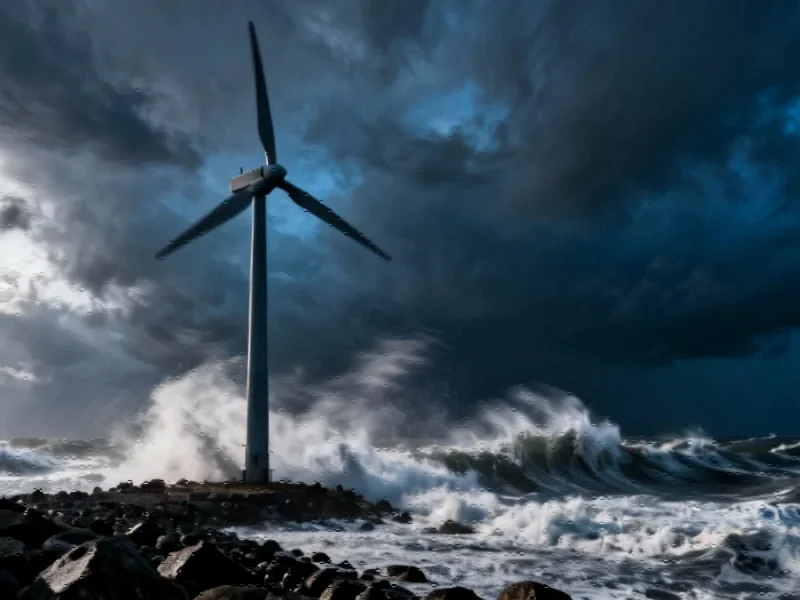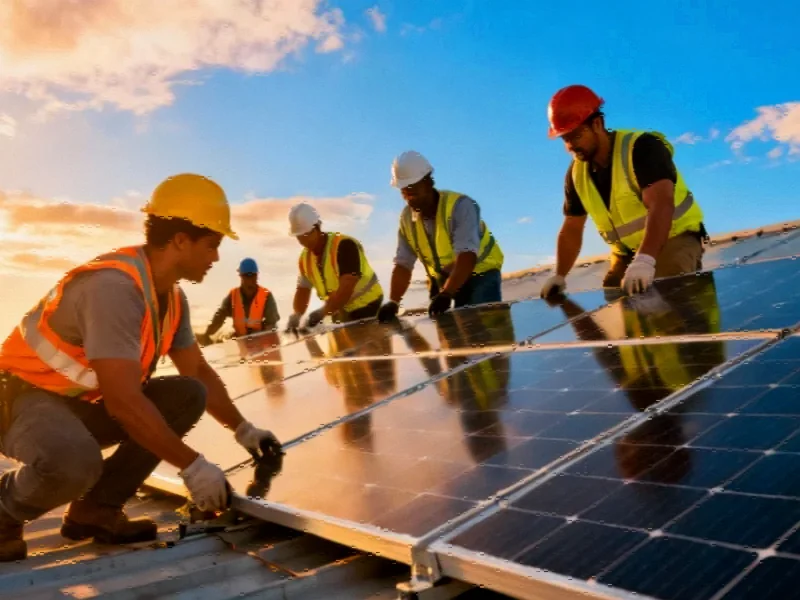The Perfect Storm Confronting Offshore Wind
The offshore wind industry, once sailing on favorable winds of rapid growth and government support, now faces unprecedented economic and political challenges that threaten to stall its momentum. While the North Sea continues to offer some of the world’s most optimal wind conditions with speeds averaging over 9 meters per second, recent developments reveal an industry grappling with fundamental structural issues.
Auction Failures Signal Deeper Problems
This summer’s failed German offshore wind auction, where not a single bid was received for two prime development spots, stands in stark contrast to the enthusiasm witnessed just two years earlier. In 2022, energy giants BP and TotalEnergies committed €12.6 billion for rights to develop major wind farms in German waters. The dramatic shift highlights how rising interest rates and supply chain constraints have pushed project economics to their breaking point.
Sven Utermöhlen, head of offshore wind at RWE, captures the sector’s predicament: “This has been predominately driven by rising costs, but also an overarching political climate where the fight against climate change and the drive for decarbonisation and energy transition has somewhat slowed down and has made space for other priorities.” The German energy company has frozen its US offshore wind investment plans as it transitions from coal, reflecting broader industry developments affecting strategic decisions.
Cancellations and Capacity Shortfalls
According to Wood Mackenzie, since 2023, a staggering 24.1 gigawatts of offshore wind capacity and offtake agreements have been cancelled. To put this in perspective, one gigawatt can power approximately one million UK homes. The consultancy estimates that outside China, only about 100GW of installed capacity will be operational by 2030—falling 140GW short of global targets for that year.
This capacity gap raises serious questions about the world’s ability to transition away from fossil fuels and reduce carbon emissions. The industry’s struggles emerge after a period of rapid expansion during the low-interest rate environment of the 2010s and early 2020s, when installed capacity grew from roughly 3GW in 2010 to 78.5GW by the end of last year.
Economic Pressures Intensify
The pandemic marked a turning point for offshore wind economics. Analysts at TGS 4C report that capital expenditure has climbed to €3 million per megawatt, up from €2.5 million in 2022. This cost inflation has forced developers to reconsider projects across global markets, with cancelled auctions occurring from the Netherlands and Denmark to India.
The sector’s leading players are feeling the pressure. Ørsted, the world’s largest offshore wind developer, has had to raise an additional $9 billion from investors while cutting a quarter of its workforce. Other significant players like Corio Generation and BlueFloat Energy have implemented similar austerity measures or exited markets entirely. These challenges parallel economic headwinds and political shifts affecting multiple energy sectors.
Political Support Becomes Unpredictable
Perhaps the most significant variable affecting offshore wind’s future is the shifting political landscape. In the United States, former President Donald Trump has actively sought to block developments and suspend permits, describing wind as the “worst form” of energy. His administration’s actions against Ørsted’s Revolution Wind project and Equinor’s Empire Wind development illustrate the regulatory uncertainty facing the industry.
In Britain, the world’s second-largest offshore wind market, political support faces challenges from insurgent rightwing party Reform, which leads in polls and has threatened to “strike down” crucial support contracts. The situation demonstrates how market trends can be dramatically influenced by political changes, creating additional uncertainty for long-term investments.
Contract Innovations Offer Hope
Despite these challenges, innovative solutions are emerging. Contracts-for-difference (CFDs), pioneered in the UK and now being adopted in Denmark, Germany, and Vietnam, provide developers with guaranteed electricity prices while requiring them to pay back differences when wholesale prices exceed agreed levels.
“You’re really looking at the CFD as the option if you want to deliver renewables at the scale that the governments are still projecting,” says Søren Lassen, head of wind research at Wood Mackenzie. These mechanisms represent crucial related innovations that could stabilize the industry during this turbulent period.
Supply Chain and Manufacturing Challenges
Leading turbine manufacturers including Siemens Gamesa and Vestas continue investing in new capacity, but TGS warns of potential shortfalls unless Chinese manufacturers expand further into global markets. However, geopolitical tensions complicate this scenario, with Europe investigating potential unfair subsidies to Chinese wind turbine makers and US Energy Secretary Chris Wright urging reduced dependence on Chinese technology.
These manufacturing challenges intersect with broader technological advancements in industrial computing that could potentially streamline production processes and reduce costs across the renewable energy sector.
Long-Term Fundamentals Remain Strong
Despite current headwinds, industry leaders maintain cautious optimism about offshore wind’s long-term prospects. Rasmus Errboe, CEO of Ørsted, who previously warned of a potential “downward spiral,” recently expressed bullishness about the industry’s future. The International Energy Agency, while downgrading its 2030 growth outlook from 212GW to 140GW, still projects growth more than double that of the previous five years.
RWE’s Utermöhlen argues that the sector’s fundamental advantages remain intact: “The fundamentals are intact, but the industry needs to get to a sustainable growth path where supply and demand are balanced. That will mean the growth trajectory is less steep than it was envisaged but that would be sustainable.” This perspective aligns with broader industrial transitions occurring across multiple sectors as companies adapt to new economic realities.
Path Forward: Sustainable Growth Through Market Correction
Industry advisers suggest that the current shakeout may ultimately benefit the sector by eliminating flawed market mechanisms and undisciplined players. Jérôme Guillet, director at advisory firm Snow, notes: “Bad auction designs are disappearing because there’s no optimism that would make people tolerate them. People that actually want to do offshore wind will do offshore wind now and it makes sense in some countries with the new stabilised current project economics.”
The industry’s future success will depend on balancing technological innovation with political stability and economic viability. As the sector navigates these complex challenges, its ability to provide reliable, homegrown power during more hours than solar—and from locations farther from population centers—remains a compelling advantage that will likely propel continued, though potentially slower, growth. These developments reflect ongoing recent technology improvements across the renewable energy landscape that could help address current challenges.
This article aggregates information from publicly available sources. All trademarks and copyrights belong to their respective owners.
Note: Featured image is for illustrative purposes only and does not represent any specific product, service, or entity mentioned in this article.



